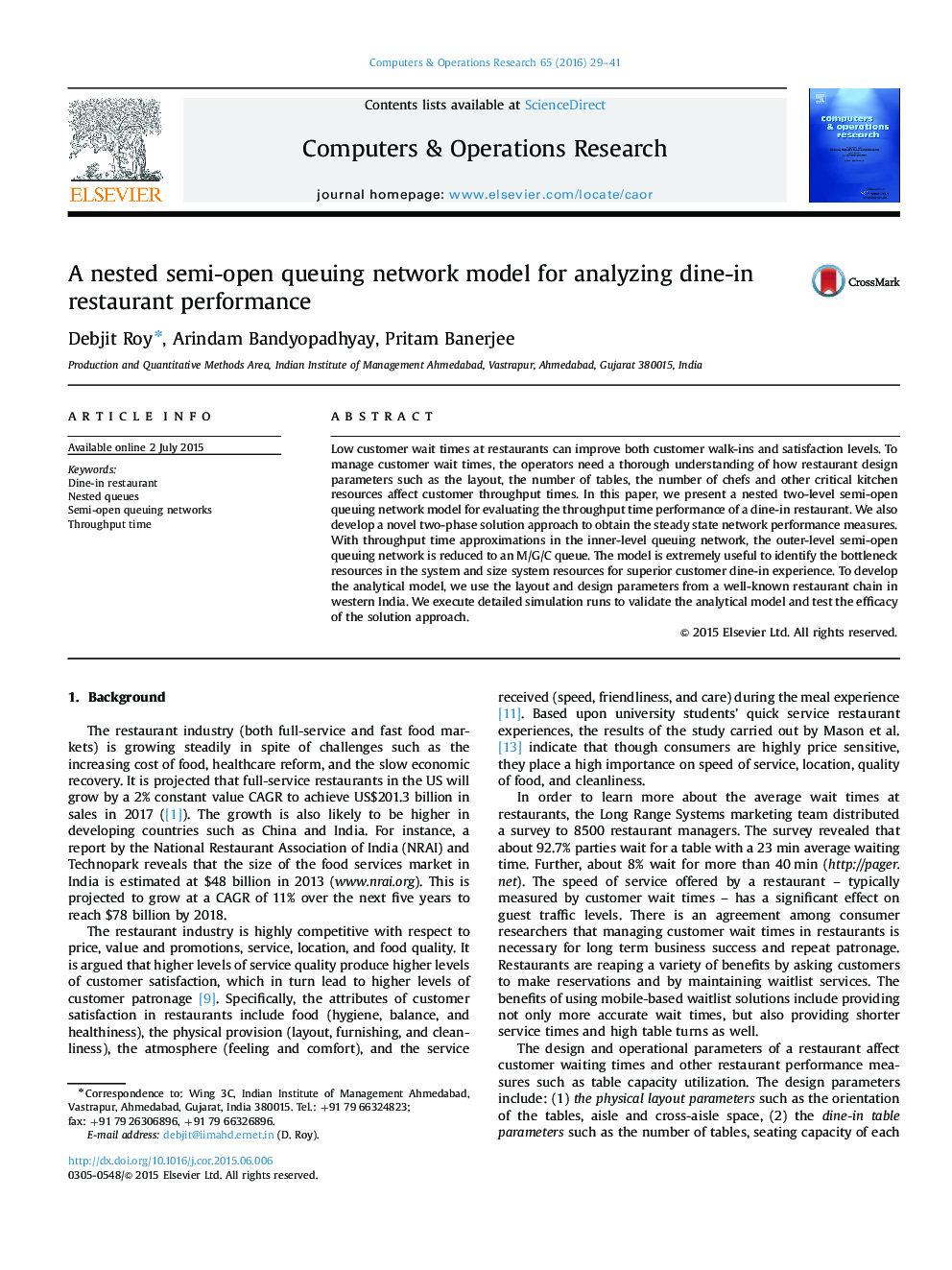| Article ID | Journal | Published Year | Pages | File Type |
|---|---|---|---|---|
| 475034 | Computers & Operations Research | 2016 | 13 Pages |
•Developed a stochastic model for performance analysis of a full-service dine-in restaurant.•Modeled dine-in and kitchen operations using a nested semi-open queuing network.•Developed a novel two-phase decomposition approach to evaluate network measures.•Tested using real input and output data from a restaurant.•Validated the model using extensive simulation experiments.
Low customer wait times at restaurants can improve both customer walk-ins and satisfaction levels. To manage customer wait times, the operators need a thorough understanding of how restaurant design parameters such as the layout, the number of tables, the number of chefs and other critical kitchen resources affect customer throughput times. In this paper, we present a nested two-level semi-open queuing network model for evaluating the throughput time performance of a dine-in restaurant. We also develop a novel two-phase solution approach to obtain the steady state network performance measures. With throughput time approximations in the inner-level queuing network, the outer-level semi-open queuing network is reduced to an M/G/C queue. The model is extremely useful to identify the bottleneck resources in the system and size system resources for superior customer dine-in experience. To develop the analytical model, we use the layout and design parameters from a well-known restaurant chain in western India. We execute detailed simulation runs to validate the analytical model and test the efficacy of the solution approach.
